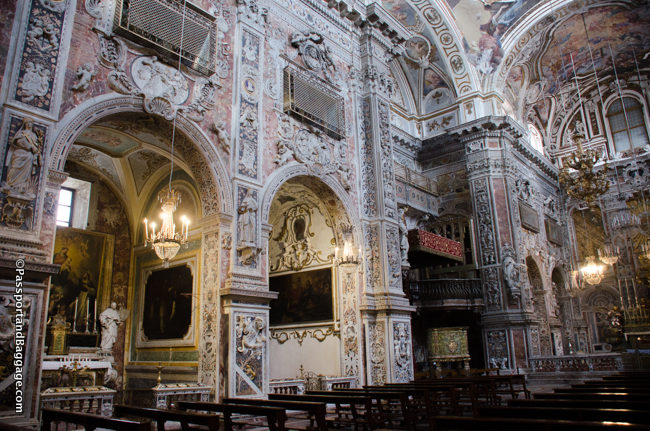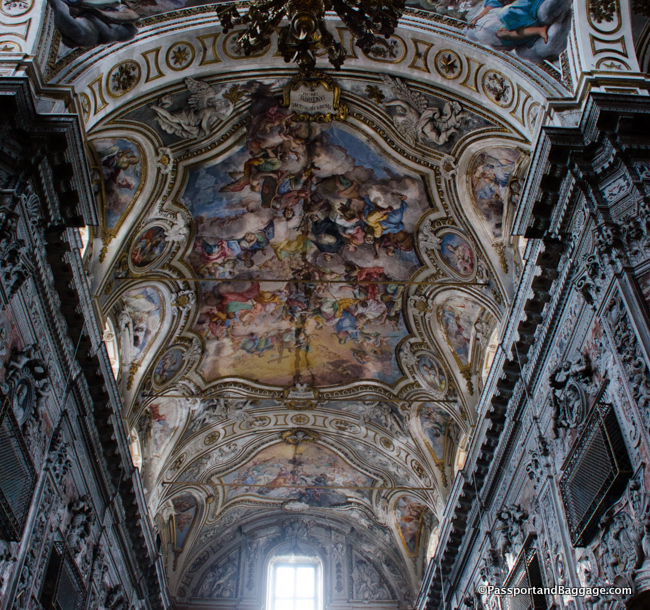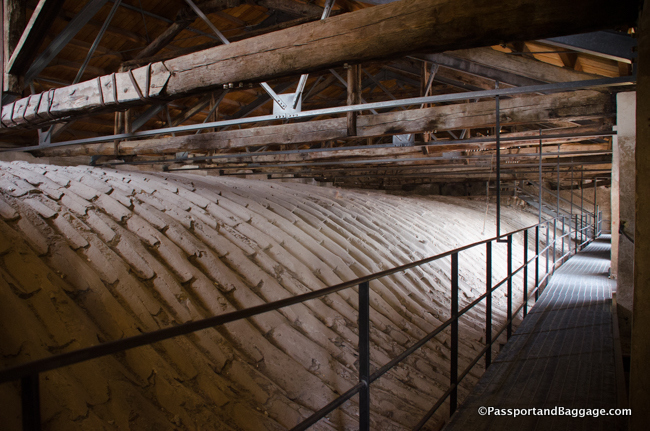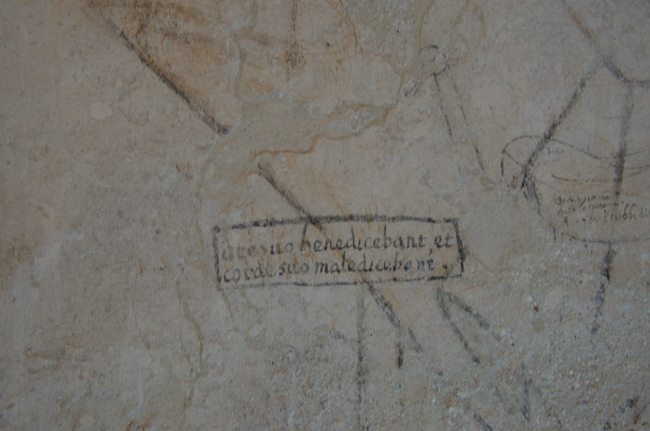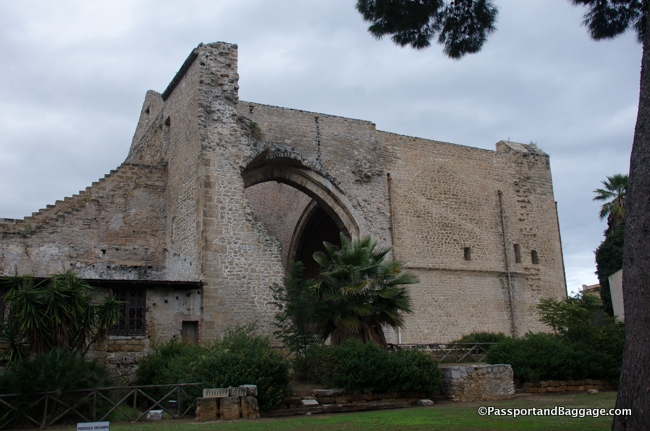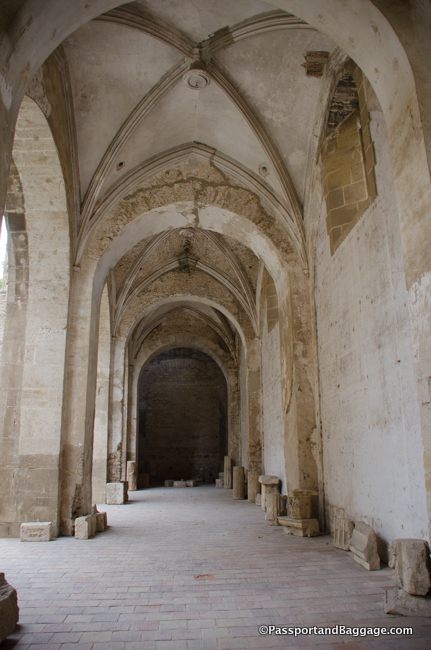November 14, 2019
The Church of Saint Catherine of Alexandria
St. Catherine’s of Alexandria has a bakery that is worth finding for one’s first stop in the morning. The church is a synthesis of Sicilian Baroque, Rococo, and Renaissance styles.
In 1310 the last will of the rich Benvenuta Mastrangelo created the foundation of a female monastery under the direction of the Dominican Order.

Chancel: at the top the fresco “The Soul in glory rises to Heaven” by Antonio Filocamo and Paolo Filocamo.
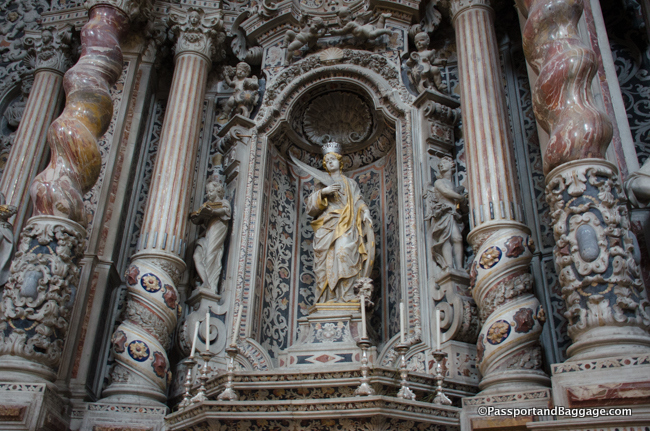
In Alexandria, Catherine was an erudite virgin of royal lineage who objected to Emperor Maxentius’ calling for a grand festival in honor of the pagan gods.
Maxentius summoned fifty pagan philosophers to debate Catherine, but she prayed for God’s assistance, and the philosophers lost the debate, converted to Christianity, and were martyred in what Catherine assured them was a Baptism by Fire.
Maxentius then promised that Catherine could be his co-ruler if she recanted, but she refused, saying she was a bride of Christ. So Maxentius had her whipped and imprisoned. After twelve days Maxentius once again offered Catherine her life if she recanted, but this time death if she persisted. She refused, so he had an engine with spiked wheels built to frighten her into submission. She prayed and an angel destroyed the engine, which is why she is often shown with the wheel as her icon. In the end, the emperor had her beheaded.
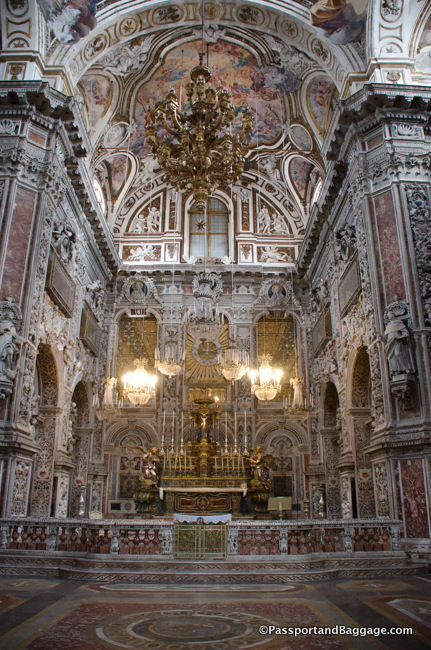
For a long time, the architecture was attributed to Giorgio di Faccio. However, more recent studies show the involvement of architects like the Florentine Francesco Camilliani and the Lombard Antonio Muttone.

St. Catherine’s was considered one of the primary monasteries of Palermo; the nuns came from noble families and professed the rule of San Domenico. In 1532, due to the increasing number of nuns, the church of San Matteo was purchased by the monastery to enlarge the building. In the seventeenth century, the monastery had become one of the most important in the city for wealth and occupied an entire block. The monastery suffered damages both during the movements of 1848 and 1860 and during the bombings of 1943. The last nuns left the monastery in 2014.
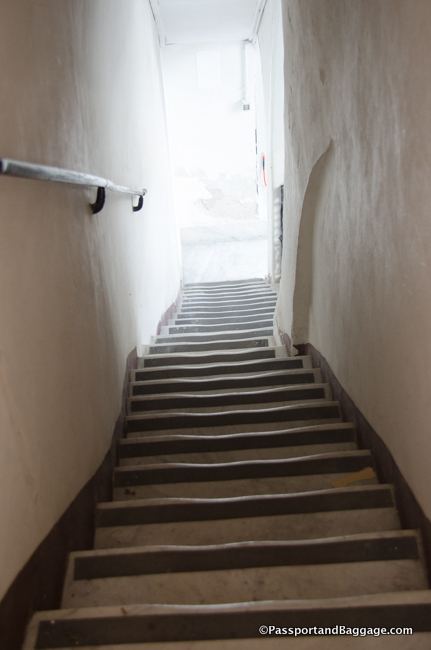
Stairs leading to the Terrace with its views of the city. The passageway allows one to view the top of the vault
Some of the pastries that can be found at Saint Catherine’s of Alexandria:
Palazzo Chiaramonte -Steri
 Built in 1307, the Chiaramonte Palace was the residence of the powerful Sicilian lord Manfredi II Chiaramonte. After his death, the palace went through many hands such as the Aragonese-Spanish viceroys followed by the Sicilian Royal, but today it is notorious mostly for the period when it was used by the tribunal of the Holy Inquisition from 1600-1782.
Built in 1307, the Chiaramonte Palace was the residence of the powerful Sicilian lord Manfredi II Chiaramonte. After his death, the palace went through many hands such as the Aragonese-Spanish viceroys followed by the Sicilian Royal, but today it is notorious mostly for the period when it was used by the tribunal of the Holy Inquisition from 1600-1782.
Today the University of Palermo owns the building and tours are given, primarily to view the graffiti left behind by prisoners of the inquisition.
In 1906 the famous anthropologist Giuseppe Pitrè discovered prisoners drawings in three cells. Restoration on these cells, removing whitewash from the graffiti walls, began in 2005.
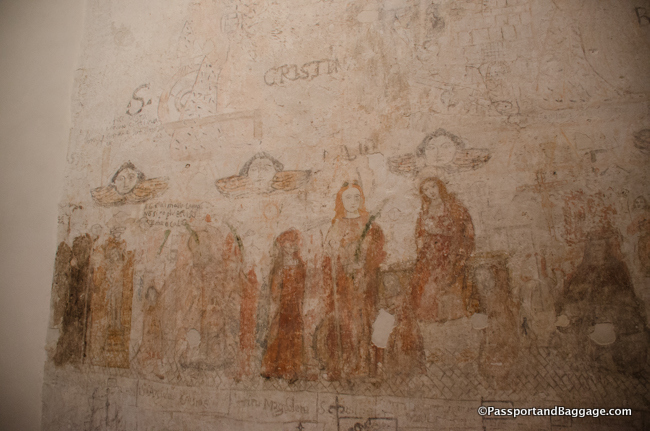
Twenty-one percent of the eight thousand people interrogated in the palazzo were women, accused of being witches, often by their husbands. The graffiti in these rooms is usually of women.

On the left is a reference to Dante’s Inferno. In the mouth, one can find the words: “Lasciate ogne speranza, voi ch’intrate”, most frequently translated as “Abandon all hope, ye who enter here.”

The hole in the wall is a toilet, and this graffiti would not have been seen by the guards. It shows an inquisitor on a defecating horse.
A poem found on one of the walls described how the prisoners were faring:
Cavuru e fridu sintu ca mi piglia
La terzuru tremu li vudella
Lu cori e l’alma s’assuttiglia
(Standard Italian)
Sento freddi e caldo, mi ha preso
La febbre malarica,
Mi tremano le budella,
Il cuore e l’anima si rimpicciolicono
I feel hot and cold, I have
Malaria
My stomach trembles
My heart and soul are fading
The prison writings provide a unique insight into the inquisition in Sicily; many were signed and dated by their authors. Unfortunately, the prison archive was burned in 1783 on the orders of the Viceroy Caracciolo, who sought to conceal the inquisitors’ activities.
Santa Maria dello Sapsimo
The construction of Santa Maria dello Spasimo (or swoon of Santa Maria) and its accompanying monastery began in 1509 with monies from Julius II, on land bequeathed by Giacomo Basilicò, a lawyer and the widower of a rich noblewoman.
The church was never completed because of the rising Turkish threat in 1535, where resources meant for the church were diverted to fortifications of the city against any possible incursions.
Even in its unfinished states, Lo Spasimo shows the late Gothic style architecture that permeated building practices in Palermo at the time as well as the Spanish influence in the city.
